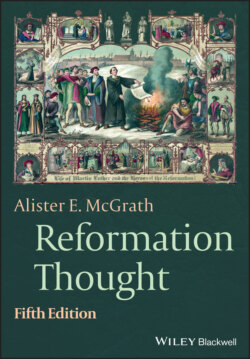Читать книгу Reformation Thought - Alister E. McGrath - Страница 16
The Catholic Reformation
ОглавлениеThis term is often used to refer to the revitalization of Catholicism, which is often thought to begin in the period following the opening of the Council of Trent (1545). In older scholarly works, this movement is often referred to as the “Counter-Reformation”: this term refers primarily to the strategies that the Catholic church developed as a means of combating the Protestant Reformation. The Catholic church, however, countered the threat from Protestantism partly by reforming itself from within, in order to address and remove any legitimate grounds of Protestant criticism. In this sense, the movement is to be seen both as a reformation of the Catholic church, as well as a critique of the Protestant Reformation.
The same concerns underlying the Protestant Reformation in northern Europe were channeled into the renewal of the Catholic church, particularly in Spain and Italy. The Council of Trent, the foremost feature of the Catholic Reformation, clarified Catholic teaching on a number of confusing matters, and introduced much needed reforms in relation to the conduct of the clergy, ecclesiastical discipline, religious education, and missionary activity. The movement for reform within the Catholic church was greatly stimulated by the reformation of many of the older religious orders and the establishment of new orders (such as the “Society of Jesus,” often referred to as “the Jesuits”). The more specifically theological aspects of the Catholic Reformation will be considered in this textbook primarily in relation to its teachings on Scripture and tradition, justification by faith, the church and the sacraments.
As a result of the Catholic Reformation, many of the abuses which originally lay behind the demands for reform – whether these came from humanists or Protestants – were removed. By this stage, however, the Protestant Reformation had reached a point at which the mere removal of malpractices and abuses was no longer sufficient to defuse or reverse the situation: the demand for the reformation of doctrine, religious ideology, and the church was now regarded as an essential aspect of the Protestant–Catholic controversies. This point highlights the need to consider the religious ideas lying behind the “magisterial Reformation,” which became of increasing importance to the Protestant–Catholic debate as the sixteenth century progressed.
